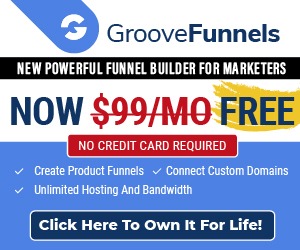20 E-Commerce Terms That All Marketers Need To Know

The COVID-19 pandemic accelerated many businesses to transition to a digital-first purchasing journey, and having a deep understanding of e-commerce has become a must for marketers. Still, as we pour our efforts into social content and online communications, some may be hitting a wall and missing the mark.
To successfully capitalize on e-commerce, marketers must go beyond product tags to knowing the ins and outs of the system. As we continue adapting to the shifting norms and expectations of consumers, marketers can study 20 need-to-know concepts to reinforce their offerings and thrive in an exceedingly digital sales environment:
1. A/B Testing: A/B testing is when you compare two versions of a site, advertisement, etc., to determine which performs best (including copy, visuals, formatting and lead times). When testing, be sure you pick just one element to change out. Alternating copy and creative makes it difficult to determine which is responsible for changing audience behavior. Be consistent, methodical and near-scientific when A/B testing — plus, give your ads enough run time to reach a solid conclusion.
2. Affiliate Marketing: A marketing model where independent marketers (i.e., influencers) are willing to sell a brand’s products for a commission. Amazon Affiliates is one example. When selecting influencers to represent your brand, do your homework. Know which other companies they are representing, and if competitors are also utilizing affiliates, be conscious of their network and the demographics they are reaching.
3. APIs (Application Program Interface): A system through which customer interactions are translated to determine computer interactions. Depending on the API of certain platforms (i.e., Instagram), marketers may run into restrictions on what data and capabilities they can and cannot access in third-party platforms. Speak with your platform representative ahead of time to know what limits a site may create for your brand.
4. Assisted Conversion: Actions taken outside of a final click that lead to a customer’s purchase. For example, imagine a customer sees an ad on Facebook and even clicks on it. However, they do not make a purchase on that visit. Instead, two days later they Google search the brand and choose to buy. In this case, the assisted conversion would be the Facebook ad.
5. Attribution Model: A value assigned to each touchpoint (e.g., email, social, organic search, paid search) along the consumer journey. There are a few theories on values, but the goal of each is to understand what tactic leads to a conversion.
6. Browser/Cart Abandonment: The rate of consumers that leave a brand’s website before completing an action.
7. Bounce Rate: The number of web visitors who visit a single webpage and leave. To lower your bounce rate, brands should include content beyond the product description, especially video! The more there is to learn and engage with on the page (besides just a shopping call to action), the longer a user is likely to stay and learn about your brand.
8. CMS (Content Management System): A digital system (i.e., Wordpress) to alter and add digital content (e.g., products) through details such as SKU, name, price and inventory status.
9. Conversion Rate: Number of conversions divided by number of visitors to indicate the success of a brand’s marketing efforts.
10. CRM (Customer Relationship Management): A digital system (i.e., Salesforce) that maintains customer-to-brand relations through payment details, product updates, customer data and after-sale communications.
11. Facebook Pixel: Code placed on a brand’s website to track conversions through Facebook ads and determine future strategies (e.g., audience targeting and ad optimization).
12. Google Keywords: With this Google tool, brands are able to see which keywords related to their industry are most-searched. They can then include them in their ads to determine when and where they will show up. For paid keywords, remember that branded keywords will always be less expensive than non-branded.
13. HTML: Standard coding language for digitally appearing documents (e.g., websites).
14. JavaScript: Versatile coding language meant to extend the capabilities of a webpage beyond static use (e.g., customer communications and display).
15. Landing Page: Custom page developed for a brand’s unique audience targets. For example, consider you are running a campaign on shoes for summer. Rather than directing users from an ad or piece of organic content to the product description page, you could send them to a tailored landing page that showcases how a curated selection of shoes is perfect for summer. This creates a cohesive storyline that better illustrates your campaign message.
16. PPA/PPC (Pay Per Action/Pay Per Click): A method of ad purchasing in which advertisers pay each time an action is taken — for example, each time a link is clicked.
17. Purchase Funnel/Conversion Funnel: The route a consumer takes — made up of multiple touchpoints — from brand awareness to conversion.
18. Retargeting: A method of digital marketing which tracks previous web visitors and places continued ads on their browser.
19. ROAS/ROI (Return on Ad Spend/Return on Investment): Revenue from marketing divided by the cost of advertising to determine the efficiency of a brand’s marketing efforts.
20. SERP (Search Engine Results Page): The results delivered to a user after searching, as determined by SEO keywords.
Marketers are sure to confront each of these terms as they roll out extended digital offerings. Despite easing federal regulations on brick-and-mortar facilities, the transition from one historical event to another has forced us to, once again, lean heavily into e-commerce. By understanding these terms, brands can use their knowledge to create informed strategies that effectively reach and help convert consumers.











0 comments:
Post a Comment
Please do not enter any spam link in the comment box.